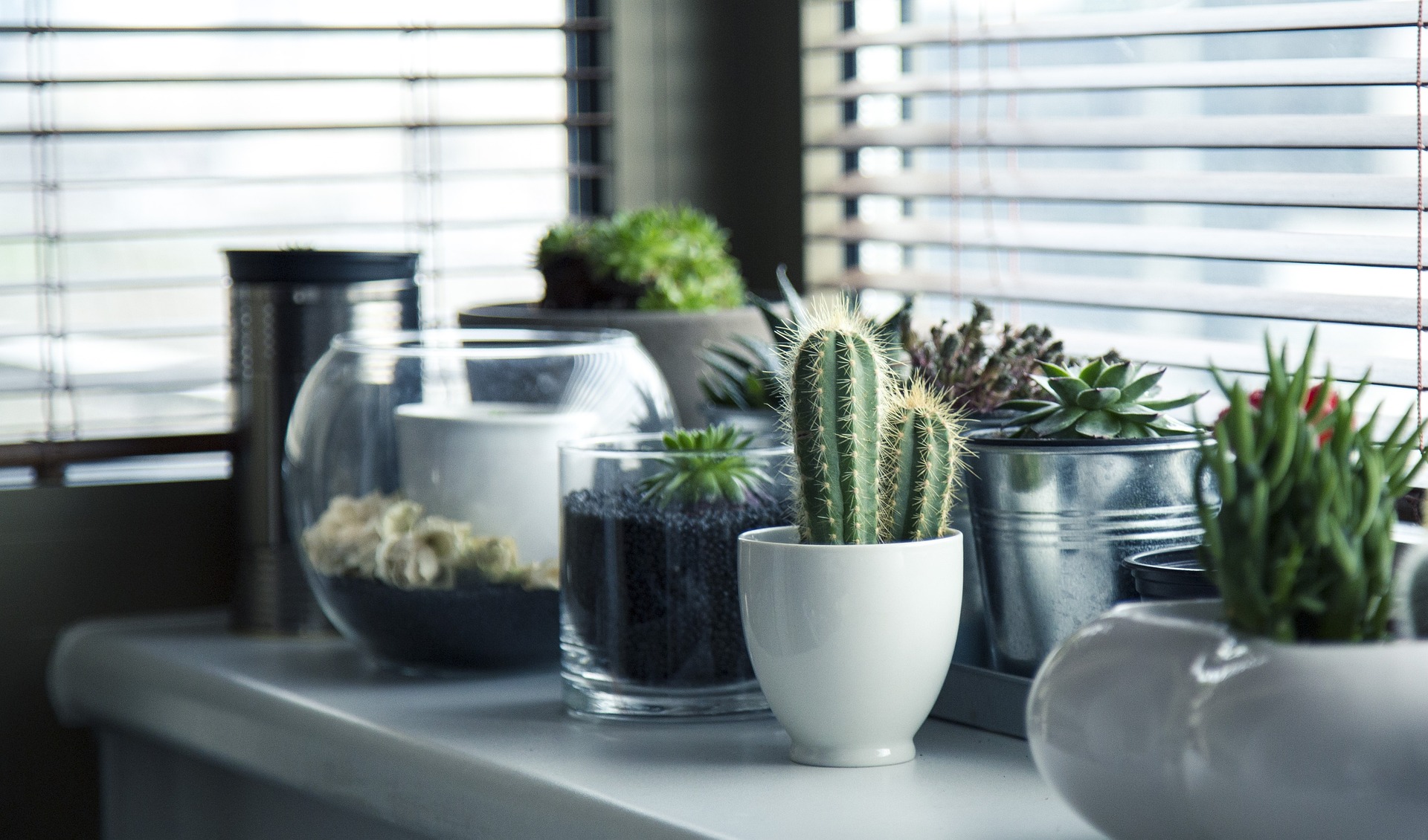Caring for Succulent Plants: Growth and Arrangement Tips
Succulent plants are more than trendy decorations; they offer a low-maintenance way to bring nature into your home. Often tolerant of infrequent watering, succulents suit many busy lifestyles. With diverse shapes and colors, succulent plants can enhance indoor and outdoor spaces. Whether you’re learning their care, exploring popular varieties, or trying new gardening ideas, succulents invite creativity and personal expression.

Succulents have become increasingly popular in home gardening due to their unique aesthetic appeal and relatively low maintenance requirements. These remarkable plants store water in their leaves, stems, or roots, allowing them to thrive in arid conditions where other plants might struggle. From compact indoor arrangements to sprawling outdoor landscapes, succulents offer versatility and visual interest for any space. With proper care and creative arrangement techniques, these drought-tolerant plants can provide years of enjoyment with minimal effort.
Essential Care Tips for Healthy Succulent Growth
Successful succulent gardening begins with understanding their basic needs. Most succulents require bright, indirect light for at least six hours daily, though some varieties can adapt to partial shade. When growing succulents indoors, place them near south or east-facing windows to ensure adequate light exposure. For outdoor succulents, choose locations that provide morning sun but protection from intense afternoon heat, especially in warmer climates.
Watering practices are crucial for succulent health. Unlike traditional plants, succulents prefer the “soak and dry” method—thoroughly water the soil until it drains from the bottom, then allow it to dry completely before watering again. During winter months or dormant periods, reduce watering frequency significantly. Overwatering is the most common cause of succulent death, leading to root rot and fungal diseases.
The growing medium also plays a vital role in succulent health. These plants require excellent drainage, making standard potting soil unsuitable. Create a specialized succulent mix by combining regular potting soil with coarse sand, perlite, or pumice at a 1:1 ratio. This mixture prevents water retention while providing necessary nutrients. For container gardening, always select pots with drainage holes to prevent water accumulation around the roots.
Creative Succulent Gardening Ideas for Any Space
Succulent gardening offers endless creative possibilities for both novice and experienced plant enthusiasts. Vertical gardens provide an innovative way to display succulents while maximizing limited space. Using specialized wall planters, picture frames, or repurposed pallets, you can create living artwork that serves as a stunning focal point in any room or outdoor area.
Miniature succulent gardens bring charm to small spaces through terrariums, teacups, or shallow dishes. When creating these miniature landscapes, layer small rocks at the bottom for drainage, add a thin layer of activated charcoal to prevent odors, and top with well-draining succulent soil. Arrange small succulents with complementary colors and textures, leaving room for growth. These compact gardens make perfect desk accessories or thoughtful handmade gifts.
For outdoor spaces, succulent rock gardens provide low-maintenance beauty in areas where traditional plants might struggle. Integrate succulents among rocks of varying sizes and colors to create natural-looking landscapes that require minimal water and care. This approach works particularly well on slopes or areas with poor soil quality, transforming challenging garden spaces into attractive, sustainable features.
Designing Large Succulent Arrangements with Impact
Large succulent arrangements create dramatic visual impact in both indoor and outdoor settings. When designing substantial arrangements, consider the mature size and growth habits of each plant. Place taller varieties like Euphorbia or columnar cacti toward the back or center, surrounded by medium-sized plants such as Echeveria or Graptoveria. Edge the arrangement with trailing varieties like String of Pearls or Burro’s Tail to soften the composition and create dimension.
Color coordination elevates large succulent arrangements from ordinary to extraordinary. Work with complementary color schemes—such as blues and oranges or purples and yellows—or create monochromatic displays using various shades of a single color. Texture variation adds visual interest through contrasting forms: pair rosette-shaped plants with cylindrical varieties, spiky specimens with smooth-leaved types.
For container selection, oversized shallow bowls, troughs, or repurposed items like old wheelbarrows or wooden crates provide ideal foundations for large arrangements. Ensure any container has adequate drainage by drilling holes if necessary. Large arrangements benefit from topdressing with decorative elements like colored glass, river rocks, or crushed granite, which not only enhance aesthetics but also help prevent soil erosion and reduce evaporation.
Professional Succulent Landscaping Techniques
Successful succulent landscaping requires thoughtful planning and design. Begin by analyzing your site conditions—sunlight exposure, soil type, and climate patterns—to select appropriate varieties. Group plants with similar water and light requirements together to ensure all thrive in their shared environment. In regions with cold winters, choose cold-hardy varieties like Sempervivum and Sedum for permanent outdoor installations, or plan to bring tender varieties indoors during freezing temperatures.
Mass planting creates dramatic impact in succulent landscapes. Rather than scattering individual plants throughout a space, cluster multiple specimens of the same variety to create bold blocks of color and texture. This approach not only increases visual impact but also mimics how these plants often grow in nature. Alternate these masses with contrasting varieties to create rhythm and flow throughout the landscape.
Incorporate hardscaping elements like decorative rocks, gravel pathways, or dry creek beds to enhance the natural appearance of succulent landscapes while providing practical benefits. These features improve drainage, reduce water needs, and create distinct zones within the garden. For sloped areas, terracing with retaining walls offers both visual interest and erosion control while providing ideal planting pockets for different succulent varieties.
Becoming a Successful Succulent Grower
Developing expertise as a succulent grower requires understanding plant propagation techniques. Leaf propagation works well for many rosette-forming succulents—simply remove a healthy leaf, allow the cut end to callus for several days, then place it on well-draining soil. Within weeks, tiny roots and a new rosette will form at the leaf base. Stem cuttings offer another effective propagation method: cut a healthy stem segment, allow it to callus, then plant in slightly moist soil. For offsets or “pups” that form around parent plants, carefully separate and replant in their own containers.
Seasonal care adjustments help succulents thrive year-round. During active growing seasons (typically spring and summer), provide regular fertilization with a diluted, balanced fertilizer specifically formulated for cacti and succulents. Reduce or eliminate fertilizer during dormant periods. Adjust watering schedules according to seasonal temperature changes—increase slightly during hot, dry periods and decrease significantly during cool, wet seasons.
Troubleshooting common problems quickly helps maintain healthy plants. Etiolation (stretching) indicates insufficient light—gradually move affected plants to brighter locations. Soft, translucent leaves suggest overwatering—reduce frequency and improve drainage. Pests like mealybugs or scale insects can be treated with isopropyl alcohol applied directly with a cotton swab. Preventive measures, including good air circulation and avoiding overhead watering, minimize disease risks and promote robust growth.
Succulent gardening combines science and artistry, offering endless opportunities for creativity while connecting with nature’s remarkable adaptability. Whether designing a small indoor arrangement or transforming an entire landscape, these versatile plants reward careful attention with stunning beauty and remarkable resilience. By understanding their unique needs and applying thoughtful design principles, anyone can become a successful succulent enthusiast.




